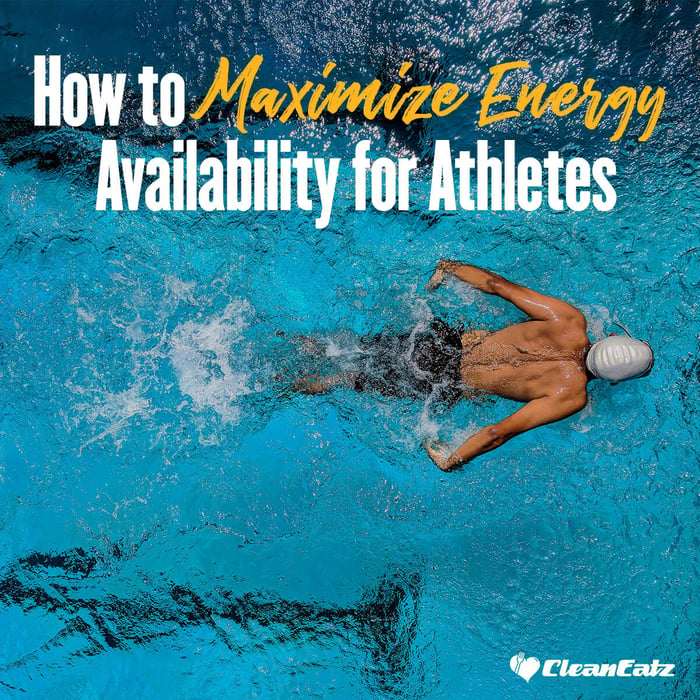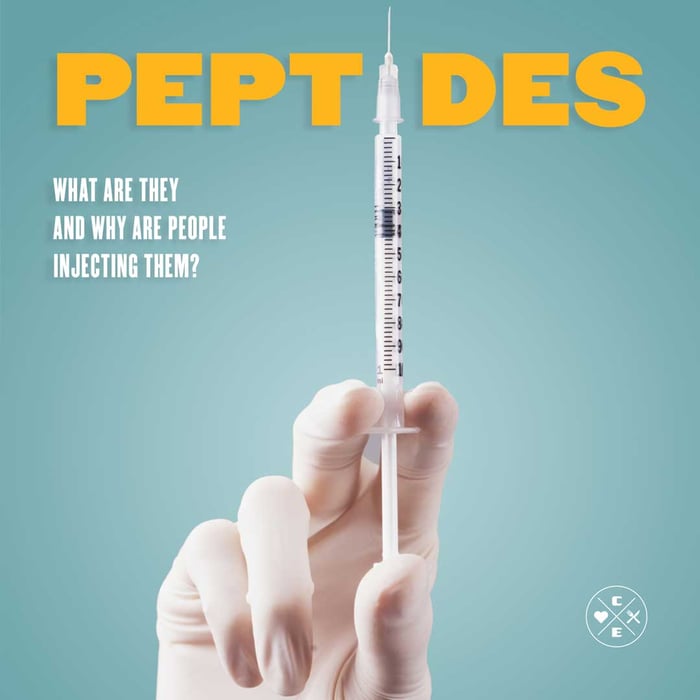Energy Availability for Athletes: Prevent RED-S & Fuel Right

Crystal Zabka-Belsky, MS, RDN, CSSD, LMNT, LDN
Nutrition
|
Exercises & Fitness
12/17/2025 8:41am
9 minute read
Whether you're a fiercely competitive athlete or someone who exercises recreationally, energy availability in athletes is paramount. Sadly, nutritional needs often take a back seat, leading to insufficient energy, poor recovery, and related health problems. We'll delve deeper into these concerns and their prevention.
Quick Answer: Energy availability is the fuel left over for your body's basic functions after accounting for exercise demands. When athletes don't consume enough calories to match their training—whether intentionally or accidentally—it triggers a cascade of health problems called Relative Energy Deficiency in Sport (RED-S). This affects 22-58% of athletes and can impair immunity, hormones, bone health, and performance. The threshold: if your energy availability falls below 30 kcal per kg of fat-free mass daily, you're at risk. Prevention requires adequate fueling, particularly around training, and recognizing the warning signs early.
Whether you're a fiercely competitive athlete or someone who exercises recreationally, energy availability is paramount to both health and performance. Too often, nutritional needs take a back seat to training demands, leading to insufficient energy, poor recovery, and cascading health problems. Understanding energy availability can help you fuel better, perform better, and protect your long-term health.
For a comprehensive approach to exercise programming that supports sustainable results, see our Complete Exercise Guide for Weight Loss.
Female Athlete Triad and RED-S: Understanding the Problem
According to research published in the National Library of Medicine, the term "Female Athlete Triad" was introduced over two decades ago. It categorizes three interlinked health issues faced by female athletes: low energy availability, menstrual dysfunction, and reduced bone density. The term "athlete" encompasses anyone consistently participating in physical activity—not just elite competitors.
Insufficient energy availability, often stemming from disordered eating patterns, is the primary driver behind these concerns. Such patterns might arise from intentional actions like weight cutting or unintentional negligence of dietary needs during heavy training periods. The spectrum of problems varies widely—from full-blown eating disorders to unintentional energy deficits, from complete menstrual cessation (amenorrhea) to irregular cycles (oligomenorrhea), and from early bone loss (osteopenia) to severe osteoporosis.
As our understanding advanced, it became evident that energy deficits impact a broader range of health aspects for both genders. Thus, Relative Energy Deficiency in Sport (RED-S) was conceptualized to capture the full picture. The 2023 International Olympic Committee Consensus Statement on RED-S emphasizes that low energy availability affects multiple body systems in exercising populations of both sexes.
How RED-S Affects Health and Performance
RED-S offers a comprehensive view of how limited energy availability impacts both health and athletic performance. The consequences extend far beyond simple fatigue:
Health consequences: Weakened immunity, gastrointestinal dysfunction, cardiovascular complications, psychological distress, and hormonal irregularities. In females, menstrual dysfunction is a hallmark sign. Both sexes can experience reduced bone mineral density, increasing fracture risk.
Performance consequences: Decreased strength, impaired endurance, reduced power output, depleted glycogen stores, poor coordination, impaired judgment, increased injury risk, and amplified psychological distress. For more on optimizing glycogen for performance, see our guide to top foods for glycogen recovery.
Research published in the National Library of Medicine shows that low energy availability affects 22 to 58% of athletes—a strikingly high prevalence that underscores the importance of understanding risk factors and warning signs.

Risk Factors for Low Energy Availability
Certain athletes face elevated risk for developing energy deficiency:
Training intensity: Athletes with intense training and competition schedules, particularly during peak season or when training volume increases rapidly.
Sport type: Endurance sports (marathon, triathlon, cycling), aesthetic sports (gymnastics, figure skating, dance), and weight-class sports (wrestling, rowing, boxing) carry higher risk.
Body composition focus: Athletes whose sports emphasize high power-to-weight ratios or specific body types.
Youth athletes: Young athletes balancing simultaneous training demands with growth and development needs.
Beginning exercisers: Novice athletes or those starting fitness programs who restrict calories while significantly increasing activity.
Warning Signs to Watch For
Recognizing early warning signs can prevent serious health consequences. Watch for these red flags:
Physical signs:
Recurrent soft tissue injuries
Stress fractures
Frequent illnesses
Unexpected or persistent fatigue
Disrupted sleep patterns
Menstrual irregularities (females)
Psychological signs:
Depression or anxiety
Difficulty concentrating
Mood changes
Preoccupation with weight and body image
Feeling "fat" despite being lean
Behavioral signs:
Avoidance of social eating situations
Excessive exercise beyond training requirements
Use of diet products or supplements for weight loss
Reduced social interactions
Performance plateaus despite increased training
Calculating Energy Availability
Energy availability can be estimated using the following formula:
Energy Availability = (Energy Intake - Exercise Energy Expenditure) / Fat-Free Mass
If the value falls below 30 kcal per kg of fat-free body mass per day, the athlete has low energy availability and is at risk for health consequences.
Example calculation: A 125-lb soccer player with 12% body fat consumes 2,325 kcal/day and burns 925 kcal during training.
Body fat: 12% × 125 lbs = 15 lbs
Fat-free mass: 125 lbs - 15 lbs = 110 lbs (50 kg)
Energy Availability: (2,325 kcal - 925 kcal) / 50 kg = 28 kcal/kg FFM/day
This value falls below the 30 kcal/kg threshold, indicating she's at risk for energy deficiency despite what might seem like reasonable caloric intake.
Why Body Size Matters
Larger athletes often require far more calories than they realize. Consider these two examples:
| Athlete | Weight | Body Fat | Fat-Free Mass | Intake | Output | Energy Availability |
|---|---|---|---|---|---|---|
| Runner | 110 lbs (50 kg) | 4% | 48 kg | 1,980 kcal | 525 kcal | 30.3 kcal/kg ✓ |
| Football Player | 290 lbs (132 kg) | 12% | 116 kg | 3,900 kcal | 840 kcal | 26.4 kcal/kg ✗ |
Despite consuming nearly 4,000 calories daily, the football player has low energy availability while the runner eating under 2,000 calories meets the threshold. This illustrates why caloric needs must be individualized based on body composition and training demands.
Three Steps to Maximize Energy Availability
Step 1: Apply Education
Begin by understanding your fueling needs and working toward at least 30 kcal per kg of fat-free body mass daily. Develop practical meal and snack strategies that address both training fuel and recovery needs.
Understanding the connection between adequate fueling and performance can provide powerful motivation for change. Our guide to carb-protein ratios for recovery can help you structure post-workout nutrition effectively.
Pre-portioned meals can be an excellent starting point for athletes struggling to meet energy needs. When you're training hard, having ready-to-eat meals eliminates the friction between recognizing hunger and actually eating. Our High Protein Meal Plan provides balanced, macro-calculated options designed for active individuals.
Step 2: Seek Care When Needed
If symptoms emerge—whether physical (recurring injuries, fatigue, menstrual changes) or psychological (anxiety, depression, disordered eating patterns)—consult with a healthcare provider to determine whether continuing training is safe. A sports medicine physician, registered dietitian specializing in sports nutrition, and mental health professional may all play important roles in treatment.
Early intervention leads to better outcomes. The 2024 German Journal of Sports Medicine guidelines emphasize that interdisciplinary treatment involving the athlete's entire support system produces the best results.
Step 3: Focus on Prevention
Prevention is always preferable to treatment:
Educate your circle: Share information about energy availability with coaches, training partners, and family members so they can recognize warning signs.
Plan your nutrition: Structure eating strategies around training schedules. For guidance, see our Complete Meal Prep Guide.
Prioritize performance over appearance: Focus on how nutrition supports athletic goals rather than aesthetic outcomes.
Monitor recovery: Pay attention to how well you're recovering between sessions. Poor recovery often signals inadequate fueling. Our article on the best foods to eat after a workout provides specific recovery nutrition strategies.
The Bottom Line
Energy availability is crucial for both elite and recreational athletes. A consistent imbalance between energy intake and expenditure can lead to serious health consequences, as demonstrated by conditions like the Female Athlete Triad and RED-S. Understanding and recognizing the signs of low energy availability—influenced by factors like training load, disordered eating patterns, and psychological stressors—is essential for protecting long-term health and performance.
The good news: low energy availability is preventable and treatable. By prioritizing adequate nutrition, recognizing warning signs early, and seeking appropriate care when needed, athletes can protect their health while pursuing their performance goals.
Crystal Zabka-Belsky, MS, RDN, CSSD, LMNT, LDN
Resident Dietitian, Clean Eatz Kitchen
FAQ
What is energy availability in athletes?
Energy availability refers to the amount of energy left for an athlete's body functions after accounting for the energy expended during exercise. It's calculated as (Energy Intake - Exercise Energy Expenditure) / Fat-Free Mass. When this value falls below 30 kcal per kg of fat-free mass per day, an athlete has low energy availability and is at risk for health and performance problems.
What is RED-S and how does it affect athletes?
Relative Energy Deficiency in Sport (RED-S) is a syndrome caused by insufficient energy intake relative to exercise demands. It affects both male and female athletes and can cause weakened immunity, digestive issues, cardiovascular problems, hormonal imbalances, menstrual irregularities, reduced bone density, and impaired athletic performance. The 2023 IOC Consensus Statement recognizes RED-S as a significant health concern across all sports.
What are the warning signs of low energy availability?
Warning signs include recurrent injuries (especially stress fractures), unexpected fatigue, disrupted sleep, mood changes, reduced performance or plateaus, menstrual irregularities in females, recurrent illnesses, difficulty concentrating, and increased anxiety or depression. Athletes may also notice weight and body image preoccupation, avoidance of social eating, or excessive exercise beyond training requirements.
Which athletes are most at risk for low energy availability?
Athletes at highest risk include those in weight-class sports, aesthetic sports (gymnastics, figure skating, dance), endurance sports (distance running, cycling, triathlon), and sports emphasizing leanness. Youth athletes balancing training with growth demands, athletes intentionally cutting weight, and beginning exercisers seeking rapid weight loss are also at elevated risk. Research shows 22-58% of athletes experience low energy availability.
How can athletes prevent low energy availability?
Prevention starts with education about fueling needs and recognizing warning signs. Athletes should aim for at least 30 kcal per kg of fat-free mass daily, plan meals and snacks around training schedules, prioritize recovery nutrition, and work with a sports dietitian to develop personalized fueling strategies. Prioritizing performance over weight goals and avoiding restrictive eating patterns are also essential.



